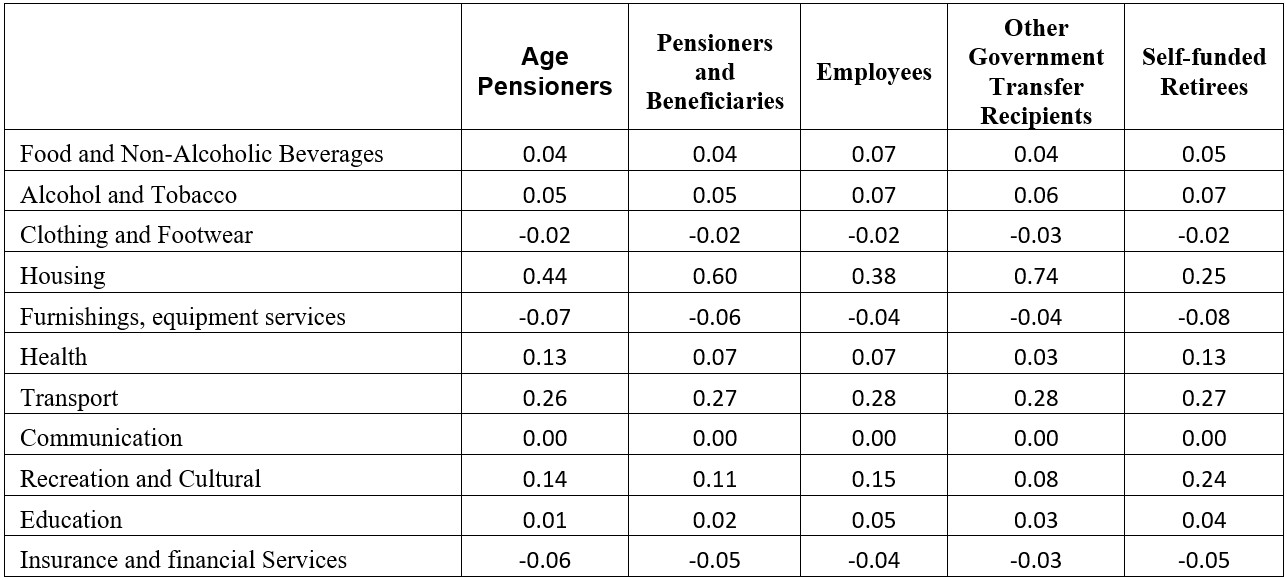
Business & Economics
A light at the end of the inequality tunnel?

Australia’s high interest rates and low GDP growth are pushing our Economic Misery Index higher, but hopefully not for long
Published 9 March 2023
The Australian National Accounts for the December quarter in 2022 have been released, and they continue a trend of concerning numbers – although for many, those numbers can also be confusing.
GDP, CPI, inflation, real growth per capita – what does it all mean?
We will discuss some of the key numbers, as well as a useful index that combines these numbers into an easy-to-understand metric, based on something we can all relate to – misery.

The latest National Accounts show that one of our measures of the standard of living – real Gross Domestic Product (GDP) growth per capita – was 0.8 per cent in 2022 compared to four per cent in 2021. Meanwhile, inflation – specifically CPI (Consumer Price Index) annual inflation – remains high, at 7.8 per cent in the December quarter 2022.
This has significant consequences for the cost of living, and in January, we saw a further increase in the cost of living ranging from 0.9 per cent for age pensioners and self-funded retirees to 1.1 per cent for other government transfer recipients.

Business & Economics
A light at the end of the inequality tunnel?
In annual terms, the cost of living rose from 7.8 per cent to 8.5 per cent for employees, and from 6.5 per cent to 7.1 per cent for pensioners and beneficiaries.
A key factor in the rising cost of living, particularly for households with employed people (known as employee households), is the impact of rising interest rates.
Before 2022, the effects of record low interest rates and fiscal policy benefitted employee households; their cost-of-living pressures were well below that of other household types.
However, recent interest rate hikes have increased the cost of living for employees.
The annual percentage change in the cost of living of employee households now exceeds that of age pensioners and self-funded retirees.
The table below shows the contributions to January’s cost of living increase, allowing us to better understand the factors driving the rising cost of living. In January, housing and transport costs were the primary contributors to the higher cost of living, with rising rents and energy bills both significant factors in this rise.

On 7 March 2023, the Reserve Bank of Australia (RBA) put the official target cash rate up by 25 basis points to 3.60 per cent. This is the tenth rate hike since May 2022 and more rate hikes are foreshadowed.
The RBA has adopted a tightening monetary policy in order to curb inflation in the medium term. Higher interest rates raise the cost of funds which tend to discourage certain interest-sensitive expenditures, reducing demand, which then leads to a fall in prices or a slowing in price increases.

Business & Economics
The cascading crisis of global food supply chains
Although higher interest rates have contributed to the rising cost of living over the past year, the RBA expects to continue increases to bring inflation back within the target band of two to three per cent.
Monetary policy is a blunt instrument and the effect of the rate hikes on various expenditures occur with long and variable lags.
In practical terms, this means that the stance of monetary policy – the pace and size of the rate hikes – is determined in an environment of great uncertainty and there’s concern that too fast and too big an increase will cause huge falls in employment and growth.
This is something policy makers would like to avoid.
Evaluating the effects of policy by examining the trade-offs through the lens of the welfare of the citizenry is complex. Here, we present one simple aggregate index to demonstrate these trade-offs.

The Misery Index was created in the 1960s by American economist Arthur Okun as a simple economic indicator of how the average person is doing economically. It was simply the sum of the seasonally adjusted unemployment rate plus the annual inflation rate.
The Index was improved by macroeconomist Robert Barro and modified further by economist Steve Hanke to include the interest rate, minus the year-on-year percent change in per-capita GDP growth.
The assumption is that higher unemployment, worsening of inflation and the cost of borrowing create economic and social costs – or misery – for a country, but this is offset by growth and employment.

Business & Economics
Using evidence to design Australia’s economic policy
The figure below shows the quarterly Economic Misery Index for Australia since 2000. The black line is the sum of the rates – inflation, unemployment and interest – while the red line includes the offsetting effects of the growth rate.
In the fourth quarter of 2022, the Index (black line, unadjusted for growth) was 14.1 per cent, compared to 7.8 per cent in December 2019 – before the pandemic.
The current Misery Index is high.
That said, it’s still marginally lower than the highest value during the global financial crisis, where it was 16.3 per cent in third quarter of 2008. The Index today is also comparable to much of the 2000s, when inflation was lower but interest rates were higher.
Taking per capita growth into account (the red line), we see that in the second quarter of 2020, the Misery Index spiked to 13.7 per cent, and the main contributors to our ‘misery’ were the negative growth rate (-6.9 per cent) and high unemployment rate (6.9 per cent).

But the economy quickly rebounded and ‘misery’ plummeted in 2021’s second quarter with growth per capita (9.8 per cent) offsetting the unemployment rate at 5.2 per cent and the rise in the interest rate (from 1.1 per cent to 3.8 per cent).
More recently, the Misery Index has been creeping up.
But once we factor in growth, the average annual economic misery index at 9.2 per cent in 2022 is lower than in both 2008 (14.8 per cent) and 2020 (10.2 per cent).

Business & Economics
The rise and rise of job insecurity
Although current rate hikes are leading to increased cost-of-living pressures, it appears that inflation peaked in the December quarter and will continue to subside over the course of 2023.
This will reduce the pressure for additional rate hikes, with a resulting stabilisation in the cost of living – particularly for employee households who have borne the brunt of interest rate rises.
We also anticipate that while GDP growth will remain low, it’s unlikely to be negative, and while the unemployment rate will creep up, it will also remain low.
The economic misery index might rise a little but we expect that it will likewise moderate in 2023.
Banner: Getty Images